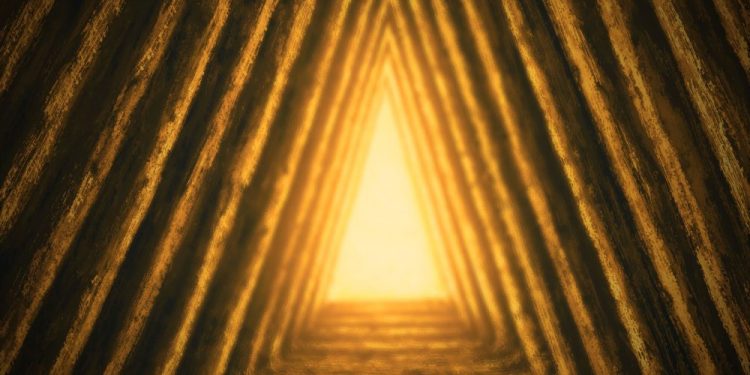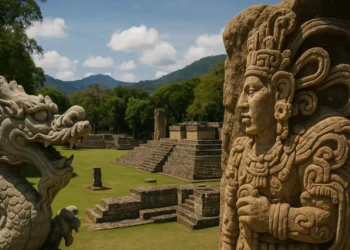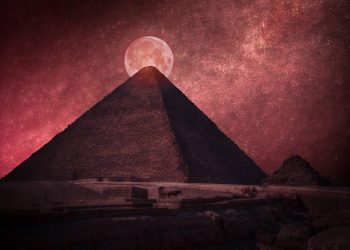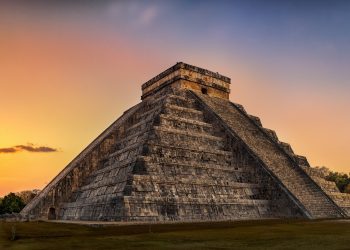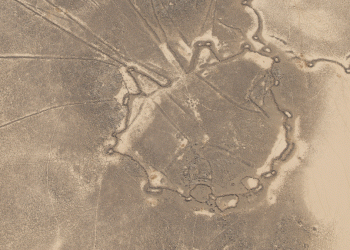Pyramids are fascinating, and their true purpose has remained a mystery, sparking debates that have lasted for decades.
Were pyramids tombs? Were they ‘false’ tombs? Or did they serve a much grander purpose than simply being the eternal resting place of ancient kings?
The truth is, we don’t know. The three main pyramids at Giza, for example, are often considered the final resting places of Pharaohs Khufu, Khafre, and Menkaure.
The only problem is, when these pyramids were first opened, there were no mummies inside.
To this day, no discovery has conclusively ended the mystery and confirmed that the pyramids were tombs.
But despite this, some truly strange things have been found inside the pyramids—things that have left even the most skeptical experts stumped.
The peculiarities found inside the pyramids are perhaps not so much what we DID find, but what we DIDN’T find.
No burial chambers have ever been discovered.
The Great Pyramid of Giza, for example, surprised experts when they found an ancient defense mechanism built into the pyramid, designed to prevent tomb robbers from looting its treasures.
But one of the strangest discoveries inside the pyramids is the remains of OTHER pyramids.
Yes. Some pyramids across the globe have been built like massive Russian dolls—one pyramid inside another. It’s as if the ancient builders began with a basic construction technique and continued to expand and evolve these structures, eventually creating some of the most awe-inspiring pyramids ever built.
Chichen Itza and the Pyramid of Kukulkan
One of the most famous pyramids in Mexico stands proudly in Yucatán, on the Yucatán Peninsula.
Chichen Itza was likely one of the largest Maya cities and may have been one of the mythical great cities, or Tollans, mentioned in later Mesoamerican literature.
Like many ancient Mesoamerican cities, Chichen Itza features densely clustered architecture that displays evidence of advanced city planning techniques.
The entire city was built on broken terrain, and archaeologists have found evidence that the ancient builders leveled the area artificially to create some of their most prominent structures.
Today, more than 2.5 million tourists visit the site each year.
The Pyramid of Kukulkan, also known as El Castillo, is a marvel of ancient engineering.
The creation of superimposed buildings was common among Mesoamerican cultures, and evidence of this building technique can be found throughout the region.
In the mid-1930s, the Mexican government sponsored an excavation of the Pyramid of Kukulkan. Archaeologists eventually discovered a hidden staircase beneath the northern side of El Castillo. Excavating from the top, they were astonished to find another temple buried below the current structure.
But that’s not all.
In 2016, archaeologists announced the discovery of yet another pyramid inside the Pyramid of Kukulkan. Inside one of the temple chambers, a Chac Mool statue and a jade throne in the shape of a jaguar were found.
Teotihuacan’s Pyramid of the Moon
Teotihuacan is a stunning ancient city, home to some of the world’s most impressive pyramids. It features three main pyramids: the Pyramid of the Sun, the Pyramid of the Moon, and the Pyramid of the Feathered Serpent.
The Pyramid of the Moon, the second-largest pyramid at Teotihuacan, is a marvel of ancient engineering.
Archaeological evidence and excavations suggest that the Pyramid of the Moon underwent about six renovations in ancient times, each one adding new features that covered the previous structure. Today, seven layers of construction make up the pyramid we see.
Embedded in stone, each layer reveals details about the period in which the pyramid was updated, offering insights into the religious significance of the structure over time. Scholars believe that Building 1, a square pyramidal platform about 14 meters long, is the oldest monument at Teotihuacan, likely built around 100 CE.
As time passed, the pyramid was upgraded, and the seventh layer we see today is believed to have been completed around 400 CE.
The Great Pyramid of Cholula
Not far from Teotihuacan, in Puebla, stands the Great Pyramid of Cholula, hidden beneath a hill.
The Great Pyramid of Cholula is so massive that even the Great Pyramid of Giza seems dwarfed in comparison.
It’s not just big—it’s colossal. It’s imposing, breathtaking, and witnessing it firsthand is an experience like no other.
This giant pyramid is the largest of them all. Rising 66 meters into the sky, it may not be the tallest pyramid in the world, but it is certainly the largest by volume. Measuring 450 meters by 450 meters, the Great Pyramid of Cholula is recognized by the Guinness Book of World Records as the largest pyramid on Earth.
Over a period of a thousand years before the Spanish invaded the Americas, the ancient builders underwent numerous construction phases, gradually increasing the pyramid’s size until it became the largest of them all.
Originally, the pyramid started as a small, simple platform. The scope of its greatness was likely beyond the comprehension of its builders at the time.
Scholars today argue that the Pyramid of Cholula is like a giant Russian doll of ancient construction, “built by various participating cultures.”
Construction most likely began around the third century BC and continued until around the ninth century AD.
What began as a small platform eventually grew into a supermassive temple, becoming the largest pyramid and the largest monument ever built anywhere on Earth, with a total estimated volume of 4.45 million cubic meters. The base of the Great Pyramid of Cholula spans 160,000 square meters, three times the size of the Great Pyramid of Giza’s base.
This pyramid is legendary. And speaking of legends, it is said that the massive pyramid was built by Xelhua, one of the seven giants of Aztec mythology.



